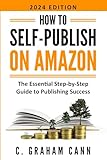How Many Bananas Do You Have?
Michel Neray offers a look at the bananas way to structure books, articles and speeches.

The list goes on.
Have you ever wondered why so many successful books, articles and speeches have titles or subtitles that use the `bananas' approach they incorporate a number and a thing?
Of course, not all successful titles have numbers in them, and even if you have no intention of using one in the title of your book, article or speech or even writing one there are big reasons why you should want to come up with your own bananas. (I'll explain why I call them `bananas' later in this article.)
Developing your own set of bananas allows you to create a powerful framework around your own intellectual property a framework you can brand, create products around, and finally establish a body of knowledge that allows you to leverage your expertise beyond your hourly rate.
This framework helps you tie together the key elements of your article or story, and can serve as a solid foundation for your outline, table of contents or sales rationale.
On the receiving end of the communication, the neat, little numbered structure gives your readers and listeners something specific to wrap their heads around. Bottom line: it helps them understand what you do, how you do it and why they should pay attention.
Perhaps that's why this style of title has been around since, say, The Ten Commandments!
The Ten Commandments
Using this framework whether you use it explicitly in your published materials or not makes it easier for you to walk people through your rationale, selling points, story or Essential Message. It demonstrates that you have fully thought through all the application of your area of expertise. And, it makes it easier for potential customers and clients to relate their own issues and challenges to what you offer.
In fact, once you look around, you'll notice that almost every situation that calls for a persuasive argument of any kind, calls for the banana treatment.
That's why so many authors organize their material into chapters and subchapters using this framework. And, you'll find this approach equally powerful for articles, sales letters, keynote speeches, presentations and proposals.
Even instruction manuals often use this approach. To prove it to yourself, go to your kitchen cabinet and pull out the box that your bread maker came in. Dust it off and dig out the instruction manual that came with it. There are three types of bananas that you can create, and chances are, your bread machine instruction booklet uses all three.
Let's start with the most obvious one.
1. Ingredients
Every recipe calls for certain ingredients. Bread recipes are notorious for being fussy about requiring the exact type of ingredients to bake a loaf of bread successfully. Leave out the yeast, or use the wrong kind of yeast, and the product you scrape out of the machine will be a let-down, literally.
Now think about the advice you give your clients to help them achieve a successful result in your field of expertise. Are there certain ingredients components of your solution that are absolutely mandatory in order to get a successful outcome? Are there ingredients that, if left out, will almost guarantee failure?
Think about a specific client or a company that you might have read about in the media. Then brainstorm the errors, omissions, gaps and pitfalls they fell into when working in your area of expertise. Those are the clues that can help you build a unique set of ingredients.
2. Sequence
Back to your bread maker.
Some bread machines want you to put the dry ingredients first; others ask you to put them in last. The important thing is that if you mess up the sequence, you mess up the bread.
In fact, chances are your bread machine instruction booklet outlines a very specific series of steps to ensure the best possible result. These steps usually encompass more than just the order of ingredients. Step one often begins with wiping the unit dry, while the last step is `allow the bread to cool before slicing and serving'.
Sequence is important.
When clients (or your competition) try to do what you do, they may mess up by skipping a step or proceeding in the wrong order the proverbial `cart before the horse' mistake.
If, in your professional opinion and judgment, this happens a lot, the correct sequence that you recommend may be an important differentiator for you.
3. Principles
In my bread machine instruction booklet, the authors made it quite clear that there were certain principles I had to adhere to, or else I'd never achieve Bread-making stardom.
I could use all the right ingredients, in the right sequence, but if these principles were not honored, then ditto for my warranty.
These principles include: ensuring I use the highest quality and freshest ingredients; ensuring I allow time for cooling, keeping my machine clean, and so on.
Not to be confused with ingredients which are specific the principles that are important in your area of expertise may be strategies, rules, lessons, ways of being, keys, paths, fundamentals, essentials, basics, ethics, questions, values or any of a number of other terms that may arise in your head after you start breaking down your ideas or approach into bite-sized chunks.
But because neither you nor I know what they are at this point, why not just call them bananas for now?
Try a bunch!
The more you experiment with your bananas in conversations with friends, customers, clients and prospects, the quicker you'll know what works and what doesn't what engages people and what doesn't; what fits and what doesn't.
This doesn't just apply to books and articles. You'll find this approach equally powerful for sales letters, presentations, speeches, and proposals.
You don't always have to explicitly state your bananas in every conversation, but once you get used to using them, you'll begin to see how almost everything in the world can be simplified and communicated more powerfully this way.
And that's when you'll be grinning to yourself, thinking, 'these bananas are great!'
About The Author: Michel Neray has over 25 years of experience as an award-winning copywriter, an Internet pioneer, and a senior sales and marketing executive. He is the founder of The Essential Message, helping companies discover their true differentiation.
Read These Next
How to Create Digital Publicity - A Guide for New Authors
Digital publicity matters for all authors these days, not just the self-published sorts. Conventional publishers are often very weak at addressing these things in a timely way - which means you have to do it.
When Characters are Real
If you are the absolute master of all your characters, you can be sure they are not real. If, however, they surprise you now and then, you might just have the real thing.
Self-Publishing Means Self-Marketing
There are many advantages to self-publishing, but nobody should make the mistake of thinking that it’s easy. Sometimes the writing and the publishing are the easy parts. When that is done the challenge is to put your work into the shop window, where others can see it. With over a million titles on the market, you are up against some stiff competition.







 Self-Publishing for Dummies (For Dummies: Learning Made Easy)
Self-Publishing for Dummies (For Dummies: Learning Made Easy) Write. Publish. Repeat. (The No-Luck-Required Guide to Self-Publishing Success)
Write. Publish. Repeat. (The No-Luck-Required Guide to Self-Publishing Success) Self Publishing To Amazon KDP In 2024 - A Beginners Guide To Selling E-books, Audiobooks & Paperbacks On Amazon, Audible & Beyond
Self Publishing To Amazon KDP In 2024 - A Beginners Guide To Selling E-books, Audiobooks & Paperbacks On Amazon, Audible & Beyond Self-Publisher's Legal Handbook: Updated Guide to Protecting Your Rights and Wallet
Self-Publisher's Legal Handbook: Updated Guide to Protecting Your Rights and Wallet How to Self-Publish Your Book: A Complete Guide to Writing, Editing, Marketing & Selling Your Own Book
How to Self-Publish Your Book: A Complete Guide to Writing, Editing, Marketing & Selling Your Own Book Self Publishing To Amazon KDP In 2023 - A Beginners Guide To Selling E-books, Audiobooks & Paperbacks On Amazon, Audible & Beyond
Self Publishing To Amazon KDP In 2023 - A Beginners Guide To Selling E-books, Audiobooks & Paperbacks On Amazon, Audible & Beyond Self-Publishing: The Secret Guide To Becoming A Best Seller (Self Publishing Disruption Book 2)
Self-Publishing: The Secret Guide To Becoming A Best Seller (Self Publishing Disruption Book 2) How to Self-Publish on Amazon: The Essential Step-by-Step Guide to Publishing Success
How to Self-Publish on Amazon: The Essential Step-by-Step Guide to Publishing Success 14 Steps to Self-Publishing a Book
14 Steps to Self-Publishing a Book Self-Publishing Simplified: How to Publish a Book on Amazon KDP for Beginners
Self-Publishing Simplified: How to Publish a Book on Amazon KDP for Beginners